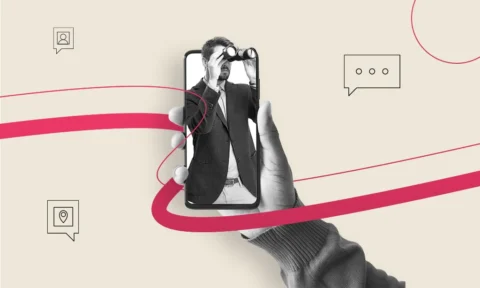Did you know that 88% of online shoppers would only return to a site with a good interface design? In addition, 70% of the online businesses that fail do so for one reason- how their site looks.
User interface design is critical to creating the best experience for your customers, which benefits your bottom line. You can expect to see more page visits, longer browsing times, easier checkouts, and quicker conversions with good design.
What’s not to love about all those advantages? Could your site benefit from improved interface design? In this article, we walk you through how to evaluate your existing site design so that you’re all set to impress your customers.
Read on for more.
What Is User Interface Design?
User Interface (UI) design is a branch of design that anticipates how users might interact with a designed element. UI design analyses points of access that users might come across and ensures that they are easy to understand, navigate, and facilitate.
Thus, UI design is at the intersection of other disciplines such as information architecture, interaction design, and graphic design.
Main Elements in User Interface
There are some aspects of websites and apps that we have all come to expect. These features are broadly consistent across different platforms. The reason for this consistency is that interface design needs to be predictable so that it helps complete functions easily and quickly.
To better understand user interface design, let us take a look at the main interface elements:
- Input controls: Includes details such as buttons, text fields, dropdown lists, or date fields.
- Informational components: Includes tooltips, notifications, and progress bars
- Navigational components: Includes elements such as sliders, search fields, icons, and tags.
Most websites and apps have a combination of these different elements. Remember, each aspect of UI design serves a practical purpose – directing the user to the end of the navigational journey.
Use the user as your guiding principle, and you’ll be all set to wow them with your interface design.
Characteristics of Great UI Design
To understand how to evaluate design, we will need to understand the characteristics of good interface design.
Some of the common principles most designers swear by include:
- The form should follow function: Buttons and other popular elements perform comfortably and predictably, so they follow the user’s intuition
- High discoverability: Important elements and icons should be visually distinctive and stand out – for example, large text, shadowing, etc.
- Keep it simple: Don’t overcomplicate what is working well, as it will only confuse the user.
- Respect the user: Focus on hierarchy and readability using elements like proper alignment, color, brightness, and more so that users feel comfortable on your page.
- Minimize: Each page should have one primary function, instead of too many calls to action or tasks distracting the user
- Use feedback loops: Getting critical feedback is one of the best ways to improve your design, as no one will understand usability quite like the user.
- Maintain consistency: The overall look and features should be cohesive
Using these principles typically ensures that UI design standards are being met. After confirming your design follows all these characteristics, you can go in and evaluate the efficacy of the final human interface design.
Best UI Practices
In addition to the characteristics of good UI design, you can use some simple hacks to elevate your page. These practices will help your design stand up to the evaluation criteria mentioned later.
Some good UI practices to evaluate your interface design are:
Be Purposeful
Don’t forget to be purposeful so that your interface stands up to evaluation. Ensure all the elements are needed and that there is no fluff.
This way, your client knows where to go and what to do. Any genuinely purposeful site has a well-thought-out result.
Always Communicate
Your site and systems need to communicate effectively with your user. One way to do this is to keep your customer updated on elements on the website.
For example, if certain products are out of stock, ensure they are labeled as such. In addition, if there is any change in inventory, delay in shipping time, offer and discount, ensure your client is apprised.
It can feel frustrating to miss important information, so incorporating communication into your design will benefit your user.
Constantly Anticipate
The designer needs to be thinking one step ahead at all times. Anticipate your user’s needs, navigation style, and more. You can do this by creating defaults that will reduce the burden on the customer.
This practice is critical as it also increases user experience! An example of designed anticipation is where a default address or information form is pre-filled.
Through this simple practice, your customer will have less work to do. They will be able to navigate the site with more ease, which will help them meet the evaluation criteria successfully!
Metrics to Evaluate Interface Design
Incorporating feedback into a completed design is a critical element of the creative process. The idea is to get to the root of a design and understand if it is serving its purpose.
These four metrics are based on established design principles. The following are the main factors to consider when assessing your completed interface.
Problem Space
The main goal of this metric is to problem solve. Designers will need to research typical users and come up with solutions that help the user while providing a delightful experience.
Doing market research can be very helpful for this metric. It helps the designer understand the users’ needs, limitations, goals, and contexts.
After you have some data about the user, analyze how their problem can be solved within constraints (if any).
Information Architecture
Once you’ve understood the end-user, it’s time to consider the various elements of the interface. Each feature on the page needs to be positioned and styled appropriately.
For example, a call-to-action button is one of the most important interface elements. Thus, UI designers would ensure that it stands out, is sized more significantly than other elements, etc.
In this stage, the elements are viewed in a hierarchy and then arranged accordingly. They should also make good use of color, and style and be positioned with each other.
Particular attention is paid to how the items are grouped or placed together to generate different effects.
UI Design
This metric in evaluating the design interface involves asking a lot of questions.
Designers check if the UI guides the user to where they are trying to get to. For example, an ‘about’ page or a ‘shop’ page should be easily accessible.
The elements thus need to be easily found while also communicating to the user. This is done when all critical factors are considered and visually considered.
Lastly, designers ask themselves if the final page looks pleasing to the eye. According to this study by the Nielson Norman Group, a beautifully designed page increases users’ acceptance of glitches or other usability problems.
Design Patterns
Design patterns are effectively a cheat sheet for designers. The metric involves looking at common patterns for web interface design.
UI designers typically go through various apps and websites and attempt to identify common elements. Menus, search fields, and save buttons are standard features across UI design.
The designer can then integrate it into their design to ensure they haven’t missed anything important.
Important UI Evaluation Principles
In addition to the metrics mentioned above, two evaluation principles must be used. Attach great importance to these principles to ensure a successful outcome.
The two UI evaluation principles are:
Ease of Use
The whole idea of UI design is that it should be easy. Easy to use, understand, follow, and find. This way, your users will get to where they need to go with ease, which is the goal of all great design.
How can you do this? Well, start by ensuring that all the elements in your app interface design or web design are easy to understand. Buttons and icons should be appropriately sized overall and in relation to each other.
Use easy-to-follow language rather than big words that can be confusing. Words should also be easy to read without strain, and they should stand out from buttons and other elements.
UI designers also aim to navigate the site without checking FAQs or spending too much time searching.
There are some easy tips you can incorporate to ensure that your design is easy to use. Here are some details:
- Frame buttons with a similar function for more accessible mental association
- Features performing the same functions should be centrally located so that users don’t have to move their cursor too much.
- Interfaces should be zoned, with each zone having a specific function or purpose.
- Ensure that essential information is presented upfront – one way to do this is to input these functions first while designing.
Once you ensure your design meets the ease of use principle, it’s time to move on to the following focus.
Visual Effects
The visual design of a site is sometimes ignored for more functional elements. However, the aesthetic of your site communicates characteristics like reliability, value, and trustability. It can ensure your user converts their click into a sale.
Thus, make sure all your elements are cohesive, harmonious, and arranged in a way that catches the user’s eye.
Here are some tips to ensure your design is visually pleasing:
- Ensure buttons are similar in size, with minimal text
- Follow the ‘golden ratio‘ principle so that your page looks proportionate and pleasing
- Don’t make your layout too cluttered and overcrowded, nor too simple – try to strike that delicate balance
- Coordinate all elements with the brand’s image and philosophy so it all looks cohesive
At the same time, remember that visual design is subjective. Most designers would disagree on matters of aesthetics and graphics. But these principles are a good place to ensure your style is appealing to a majority of users.
Usability Evaluation Technology
In addition to the traditional methods of UI evaluation, you can also use technology that will make the job easier. If you have a little extra budget to devote to testing your UI design, invest in the technologies mentioned below.
Eye-Tracking Technology
This technology uses a physiological assessment to evaluate the pros and cons of the interface. It considers the way users are likely to interact with the design.
The final evaluation uses a range of various usability criteria to decide if your site is optimized or not.
EEG Technology
EEG uses neuropsychological data in a real-time setting. Designers will see what users are attracted to visually and evaluate what elements the brain picks up on first.
It is an effective way to measure cognitive workloads. However, remember that you will need willing test participants for this kind of evaluation.
Good UI Design Is Critical to a Successful User Experience
Brands and businesses are having to create a significant online presence to cater to their digital audience. Keeping up with good UI design is critical, as it ensures your users have a smooth and seamless journey on your site.
The better designed your site is, the more likely users are to interact with your content, shop, refer, share, and more. Thus, constantly evaluating the success of your interface design is critical to user satisfaction.
We hope this article helped provide pointers to evaluating your web interface. Our team at Nizek Design specializes in creating software designed to meet the end user’s needs, so be sure to check out our work.
To get started with your next interface design project, click here.



